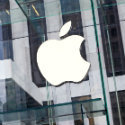
As Halloween enthusiasts prepared for their annual evening of chills, thrills and sugar-coated treats, Apple was serving up one of the year's spookiest mysteries: The unexplained improvement in iPhone sales.
Released to the usual hoopla a few weeks ago, the iPhone 11 is virtually indistinguishable from the iPhone XS, its predecessor. Before its arrival, iPhone sales had dropped a stomach-churning 15% for the first nine months of Apple's just-ended fiscal year to September 2019. In the final quarter, they were down a less hair-raising 9%, suggesting a turnaround lies ahead.
Despite the uncanny resemblance between the two models, the 11 seems to have excited smombies (smartphone zombies) in a way the XS has not been doing. CEO Tim Cook said he was "very thrilled" with the early response. Kyle McNealy, an analyst with Jefferies, thinks "demand is tracking well ahead of supply," according to a research note issued today.
It is not because of any surprising new features. Indeed, to a user who dozed off during the 7 to XS journey (which, in any case, missed a stop at 9), the 11 is not a significant improvement on the 7. The main difference is the bulkiness, which makes the new phone harder to hold and even likelier to slip out of a careless hand (such was the fate of this user's 7). Otherwise, the changes are incremental. It has a slightly better camera, a somewhat longer-lasting battery.
Apple is not the only smartphone maker cranking out gadgets that look and feel all too familiar. The lack of innovation explains why replacement cycles have lengthened, say experts. Consumers would rather stick with their ageing smartphones than shell out hundreds of dollars for a new model with few extra features.
A frenzy of marketing activity could have paid off for the iPhone maker. The 11 might also have benefited from interest in Apple's expanding range of services, including the launch of new TV shows. In the UK, the sides of London buses are plastered with adverts for See, a post-apocalyptic series in which humans have lost the power of sight. Revenues from services rose 18% in the third quarter, to about $12.5 billion, compared with the year-earlier period. They now account for 38% of Apple's total sales.
Apple may also have started to profit from the misfortunes of Huawei, a Chinese smartphone rival recently banned on security grounds from obtaining US products. While Huawei claims to have found alternatives to these for its network equipment, it recently admitted to the Financial Times that it was struggling to replace some of the computing services provided by Google, which power the apps used on Android smartphones. Its own smartphone business has been the engine of growth this year. Some observers think it is now heading for trouble.
Want to know more about 5G? Check out our dedicated 5G content channel here on
Light Reading.
Research, nevertheless, points to recent growth in the overall market following a two-year drought. According to Strategy Analytics, global smartphone shipments were up 2% annually in the third quarter, to 366 million units, compared with the year-earlier period. Linda Sui, a director at the firm, attributed that growth to pricing competition between vendors, the introduction of larger-screen devices and the arrival of 5G, a new technology that boosts connection speeds.
That 5G cycle remains the "biggest catalyst" for Apple next year, says McNealy. He reckons Apple will then ship 209 million iPhones, versus consensus estimates of 194 million, and maintains a buy rating on the stock. Tight-lipped about its 5G intentions, Apple is reportedly planning to release three new iPhone models next year, and all will include Qualcomm's X55 chip for 5G. Service providers including the UK's BT, which published its own results today, are hoping a 5G iPhone is imminent.
For all the excitement, Apple's headline sales fell 2% for the first nine months, to about $260 billion, and its net profit slumped 7%, to roughly $55 billion. Falling sales of Apple's biggest product, the iPhone, were responsible. But the results beat expectations. Shares were up 1.8% at the time of publication, and they have risen 57% since the gloomy start to the year. If Halloween contained few big treats for investors, it at least skipped any frighteners.
Related posts:
— Iain Morris, International Editor, Light Reading
About the Author(s)
You May Also Like











